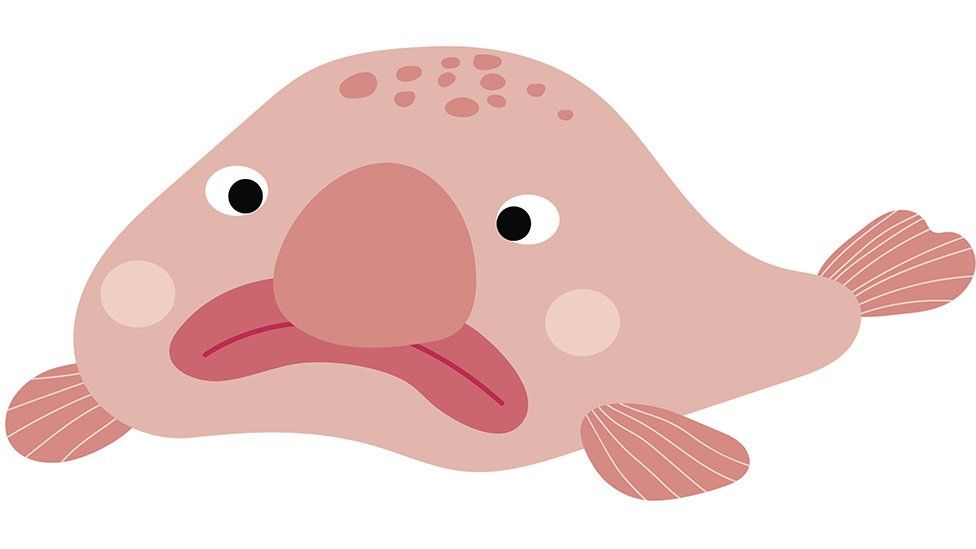The ugly animals who need saving too
- Published

A new report from the Zoological Society of London says the number of animals in the wild has fallen by 58% since 1970.
Obviously, we're very worried about elephants and dolphins but those fine specimens are always the poster-boys for endangered animals.
And there's a good reason the WWF logo is a panda not a Titicaca water frog.
It's easier to love a ball of fluff than it is a slimy mound of loose skin.
But the Titicaca water frog and all its ugly cousins in the animal kingdom, are just as much at risk as their more cosmetically blessed relations.
So, stop watching that video of the red panda in the snow and spare a few moments for these gruesome but endangered animals who deserve your love too.
The frog that's more skin than amphibian
The Titicaca water frog (nicknamed the scrotum frog) is only found in and around Lake Titicaca in South America and faces extinction from a variety of sources.
Their tadpoles are eaten by trout that have been introduced to the lake, the frogs themselves are eaten by humans and they have been dying in huge numbers due to pollution in the lake.
The monkey with more nose than face
You may not think this chap a looker but the male Proboscis monkey is blessed with a massive floppy schnozz which drives the females wild with lust.
But these large-nosed love machines are struggling in the wild due to the drastic loss of their natural habitat in Borneo's rainforest - and due to their relatively inactive nature are easy prey for hunters.
The ugliest fish in the world
No one wants to eat this boneless fish but the Blobfish is often caught in nets that trawl deep seas for lobster and other ocean life.
They only look like this when they are taken out of the ocean as their bodies are designed for deepwater life, not the catwalk of the natural world.
It's so ugly, it was even the theme of a Saturday Night Live sketch.
The almost-cute lemur
Rat-like teeth and a really long fingers to skewer grubs out of trees and yet still, there's something to love about the Aye Aye.
These lemur live on the fauna-rich island of Madagascar but locals believe the Aye Aye are harbingers of evil and are known to kill them on sight.
The best 'tache in the river
The Kaluga sturgeon has suffered greatly from the popularity of people wanting to eat their eggs as caviar and the fish is hunted and poached for its unfertilized eggs.
Pollution has also caused the population of these moustached monsters to decline.
The reptile with a thorn or two in his side
The Antsingy Leaf Chameleon is another unique animal threatened by the loss of Madagascar's forests.
Its bizarre appearance made it popular with illegal pet traders, who found people to willingly accept this strange horny reptile into their homes.
The snail with the sellable shell
The Vietnamese Giant Snail is exceptionally rare and lives only in a very small area in South Vietnam.
Due to its rarity, its shell is highly valued among shell collectors.
The bird who was poisoned by people
Congrats humans, we're almost entirely to blame for the decline in Red-Headed vultures due to a drug called Diclofenac which is poisonous to these birds.
The drug was used to treat livestock, whose bodies were then eaten by scavenging vultures.
The salamander who grows back its limbs
Axoltol, a very rare salamander, are found in the wild in just one lake in Mexico. Pollution, the pet trade and capture for research has threatened the species.
They are experimented on by scientists hoping to unlock the secrets behind the Axoltol's ability to re-grow their own limbs.
The spider who's feeling blue
It might be blue but it's still a great big hairy spider. The Peacock Tarantula is found in a small area of forest in central India, but maybe for not much longer.
Like many endangered creatures their habitat is under threat but they are also highly prized by people who keep large spiders as pets.
Find us on Instagram at BBCNewsbeat and follow us on Snapchat, search for bbc_newsbeat